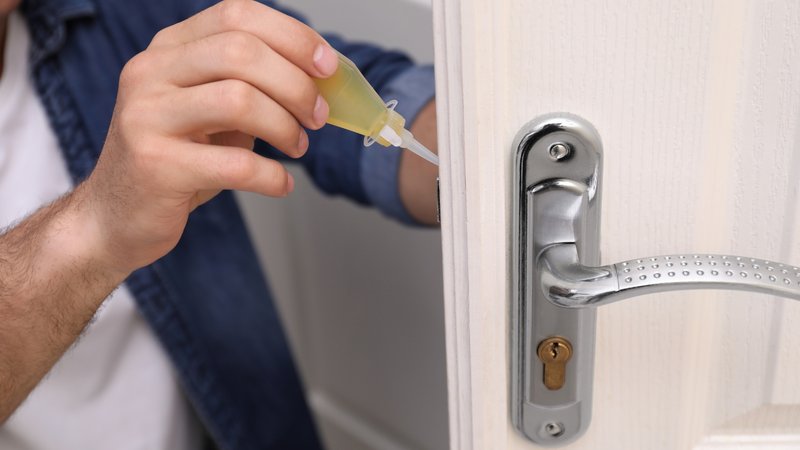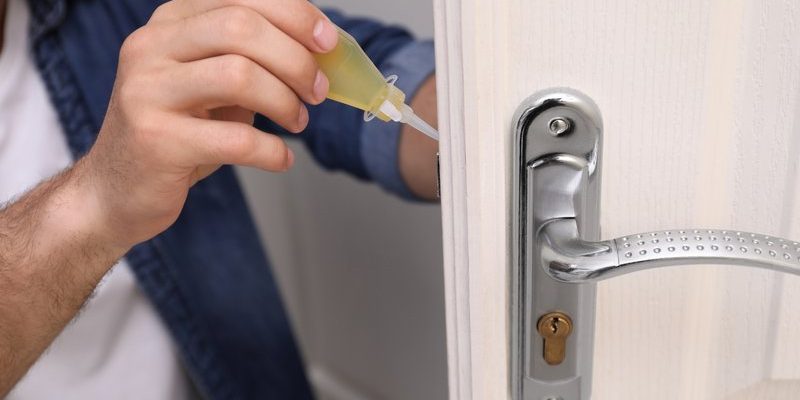
Think of it like oiling the gears of a well-loved clock; without it, things can stop ticking smoothly. Using the right techniques and materials can ensure your doors swing easily without that annoying creak. In this guide, I’ll walk you through best practices for lubricating your door hardware, focusing on keeping those mechanisms happy and functioning well in humid environments.
Why Lubrication Matters in Humid Basements
Humidity can wreak havoc on metal components. When moisture creeps in, it can cause rust and corrosion, making door hardware stiff and hard to operate. This is especially true for basements, where dampness is common. Think of rust as an uninvited guest—it doesn’t belong and can ruin the party. Regular lubrication is like a bouncer, keeping that rust away and ensuring your door hardware works smoothly.
Moreover, lubrication doesn’t just prevent rust; it also helps your door operate correctly. A well-oiled hinge prevents wear and tear, ensuring that it lasts longer. Nobody likes to replace hardware too often, right? By making lubrication a habit, you’ll extend the life of your door hardware while enhancing its performance.
Choosing the Right Lubricant
Not all lubricants are created equal. In humid areas, you’ll want to pick a product that not only reduces friction but also protects against moisture. Here are some options to consider:
- Silicone-based lubricants: These are great for metal and plastic surfaces. They repel moisture and don’t attract dirt, making them perfect for humid environments.
- Graphite powder: This dry lubricant is ideal for locks as it won’t gum up like oils can. It’s moisture-resistant, which makes it a suitable choice for basement settings.
- WD-40: While it’s multifunctional, use it sparingly. It can help in a pinch but isn’t a long-term lubricant because it can attract dust and debris.
When choosing a lubricant, consider the specific needs of your hardware. For example, some locks might work better with graphite, while hinges might prefer silicone spray. Knowing what works best is key to effective lubrication.
Step-by-Step Lubrication Process
Now that you know the right lubricant, let’s dive into the actual process. It’s as easy as pie, but you’ll want to do it right to ensure lasting results.
1. Clean the Hardware: Before applying any lubricant, start by cleaning the hardware. Remove any dirt, dust, or rust with a cloth. If it’s really grimy, you may need a mild cleaner.
2. Apply the Lubricant: For hinges, open the door fully. Spray the lubricant directly onto the hinge pins and the moving parts, ensuring that it seeps into the joints. For locks, use a straw nozzle to apply a few drops of graphite powder or silicone directly into the keyhole.
3. Work It In: After applying the lubricant, gently swing the door back and forth. This motion helps the lubricant distribute evenly and penetrates every nook and cranny of the hardware.
4. Wipe Off Excess: To prevent attracting dust, wipe away any excess lubricant that may have dripped or pooled. You don’t want a mess!
Doing this every few months can help maintain your door hardware, especially in a humid basement where conditions can change rapidly.
Common Mistakes to Avoid
Even with the best intentions, mistakes can happen. Here are some common pitfalls to watch out for:
- Over-lubrication: Just because a little is good doesn’t mean a lot is better. Too much lubricant can attract dirt, leading to a build-up that puts more strain on your hardware.
- Skipping Cleaning: Failing to clean the hardware before applying lubricant can trap dirt and grime, ultimately making the problem worse.
- Using the Wrong Product: As mentioned earlier, not all lubricants are suitable for every application. Always choose one that fits the specific needs of your hardware.
Avoiding these mistakes will save you from future headaches and keep everything running smoothly.
Alternative Solutions for Humidity Issues
While lubrication is important, there are additional steps you can take to combat humidity in your basement. These measures can help prolong the life of your door hardware:
- Dehumidifiers: Investing in a dehumidifier can significantly reduce moisture levels in your basement, lowering the risk of rust.
- Ventilation: Ensure your basement has proper ventilation. Open windows when weather permits or consider installing vents to circulate air.
- Anti-rust Products: Applying an anti-rust spray on metal surfaces can provide an extra layer of protection against moisture.
Each of these solutions can make a difference, so consider incorporating them into your maintenance routine.
When to Seek Professional Help
Sometimes, despite your best efforts, door hardware may still have issues. If you notice persistent problems, such as difficulty in opening or closing, it might be time to call in a professional. Ignoring these signs can lead to more severe damage, requiring complete hardware replacement.
A professional can assess the situation, provide targeted solutions, and ensure your door operates as it should. It’s always better to be safe than sorry!
Final Thoughts
Maintaining door hardware in a humid basement doesn’t have to be complicated. With the right lubricant and a bit of effort, you can keep your doors operating smoothly for years to come. By following these best practices, you’ll not only prevent annoying squeaks but also extend the lifespan of your hardware. Remember to clean, apply the right lubricant, and consider additional measures to manage humidity.
So next time you hear a troubling noise from your door, you’ll know exactly what to do. Stay proactive, and your door hardware will thank you!
